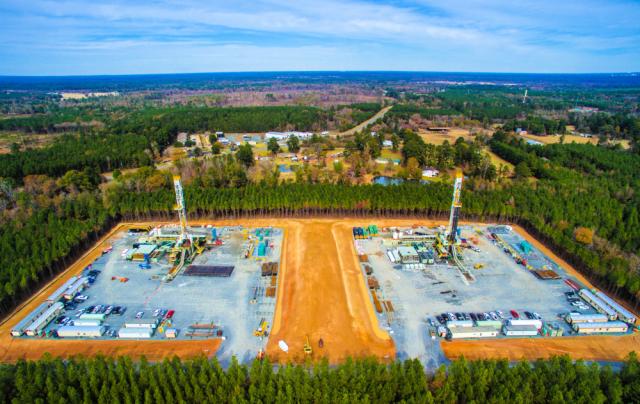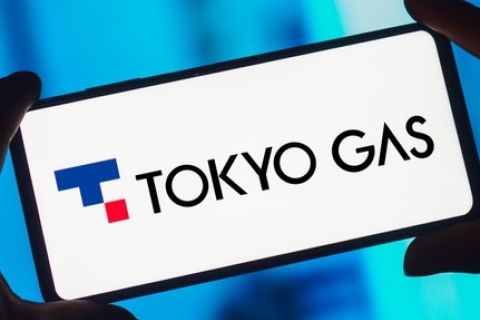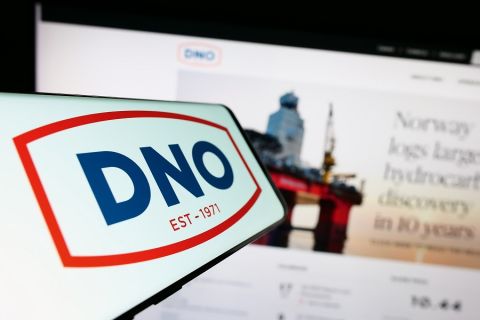
Chesapeake Energy’s agreement in August to acquire Vine Energy’s Haynesville Shale position was one of the two megadeals of the third quarter. (Source: Vine Energy)
E&P asset sales picked up steam in the third quarter, but overall M&A fell as a pair of deals—one in the hot Haynesville Shale and the other in the Permian Basin—propped up an $18.5 billion quarter, according to a recent report by Enverus.
Overall, M&A dropped 44% from the previous quarter’s record-setting frame, though the $18.5 billion in announced deals still beat the five-year quarterly average of about $16 billion, the Enverus report said.
Public company consolidation slowed, possibly as a result of higher commodity prices lessening the urgency for some small- and mid-cap companies to sell.
“We have seen a red-hot market for upstream M&A since the industry recovered its footing from the initial shock of COVID-19,” Andrew Dittmar, director at Enverus, said in the report. “It was inevitable that the hungriest buyers and sellers would find their deals and activity would revert back toward the average. We seem to be hitting that inflection point.”
Asset deals ticked up collectively, as corporate consolidation resulted in ricochet sales from large oil and gas companies parting with assets they don’t see fitting into their development plans, Enverus said. Such assets typically fall outside the areas public companies have deemed noncore. That will continue to create opportunities for private equity investors, which increased their share of acquisition pace by about 20% of transactional value.
“Private equity still has dry powder for deals,” Dittmar said. “They are using this to target assets being tagged as noncore by public companies.”
Outside of the core of the Permian Basin and a few other key areas, competition for deals drops, according to Dittmar who noted that these positions are often available at “buyer-friendly price points.”
“That said, private equity is still a net seller in the space,” he continued, “and likely to remain so for the foreseeable future given the number of investments outstanding and how long that capital has been deployed.”
Other private-equity investments found exits during the quarter, according to Enverus.
Callon Petroleum Co. agreed to purchase Blackstone-backed Primexx Energy Partners’ Delaware Basin position for $788 million. Callon said it would pay $440 million cash and 9.19 million shares of stock for the acreage.
Callon’s purchase of Primexx continues a trend of private equities that are willing to take equity when selling. With tailwinds from strong stock price performance for public E&Ps, that has been an additional source of value for sellers as shares have generally appreciated in value after the deals close, Enverus said.
Roughly $11.7 billion of transactional value—or 67% of the quarter tally—came on the shoulders of acquisitions by ConocoPhillips Co. and Chesapeake Energy Corp. However, the quarter’s top five deals were largely focused acquiring oil production.
Top Five Third-quarter Upstream Deals |
|||||
| Date | Buyers | Sellers | Deal Type | U.S. Play | Value ($MM) |
| 9/20/21 | ConocoPhillips | Shell | Asset | Delaware | $9,500 |
| 8/11/21 | Chesapeake Energy | Vine Energy | Corporate | Haynesville | $2,171 |
| 8/4/21 | Callon Petroleum | Primexx Energy | Corporate | Delaware | $788 |
| 7/8/21 | WildFire Energy | Hawkwood Energy | Corporate | Eagle Ford | $650 |
| 7/26/21 | Lime Rock Resources | Rosehill Operating | Asset | Delaware | $508 |
ConocoPhillips said on Sept. 20 it had an agreement to purchase Royal Dutch Shell Plc’s Permian position for $9.5 billion. In a departure from recent large-scale deals, ConocoPhillips agreed to pay cash for Shell’s assets, making it the largest all-cash deal in three years, according to Enverus.
In contrast, ConocoPhillips closed its January purchase of Concho Resources in an all-stock deal.
Chesapeake’s Aug. 11 deal to acquire Vine Energy Inc.’s Haynesville position was the other megadeal of the quarter. The roughly $2.2 billion deal demonstrates the appeal of the Haynesville as a consolidation target, with the shale play seen as having more room to grow compared to Appalachia because of access to infrastructure.
“There are still opportunities for public company consolidation as well as potential private sellers looking to capitalize on price levels for both gas and oil not seen in years,” concluded Dittmar. “But the sense of urgency seems to have left the deal market.”
“Through the end of the year, we are likely to see mostly smaller sized asset deals as companies trim their portfolios with the chance of an occasional larger public company merger or private E&P sale,” he added.
Enverus’ report also observed:
- Among the leading shale plays for deals, the Permian Basin remains the most competitive for deals with established players competing for additional economic inventory. Combined with more modest-sized deals, the Permian recorded $12 billion in deal value in the third quarter.
- Appalachian producers will continue to expand in the Haynesville with the two key U.S. gas plays coming under unified ownership.
- The Bakken has several active public companies that could compete for inventory, potentially driving deals to include value for upside.
- The Eagle Ford has many private E&Ps and needs a public company consolidator. Enverus said newly rebranded Ranger Oil could fill that role.
Recommended Reading
DXP Enterprises Buys Water Service Company Kappe Associates
2024-02-06 - DXP Enterprise’s purchase of Kappe, a water and wastewater company, adds scale to DXP’s national water management profile.
ARM Energy Sells Minority Stake in Natgas Marketer to Tokyo Gas
2024-02-06 - Tokyo Gas America Ltd. purchased a stake in the new firm, ARM Energy Trading LLC, one of the largest private physical gas marketers in North America.
California Resources Corp., Aera Energy to Combine in $2.1B Merger
2024-02-07 - The announced combination between California Resources and Aera Energy comes one year after Exxon and Shell closed the sale of Aera to a German asset manager for $4 billion.
Vital Energy Again Ups Interest in Acquired Permian Assets
2024-02-06 - Vital Energy added even more working interests in Permian Basin assets acquired from Henry Energy LP last year at a purchase price discounted versus recent deals, an analyst said.
DNO Acquires Arran Field Stake, Continuing North Sea Expansion
2024-02-06 - DNO will pay $70 million for Arran Field interests held by ONE-Dyas, and up to $5 million in contingency payments if certain operational targets are met.






